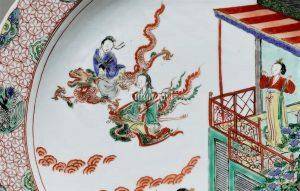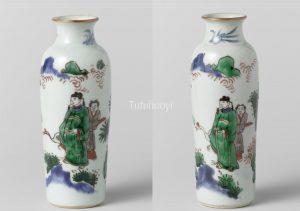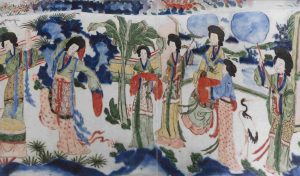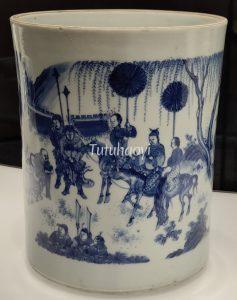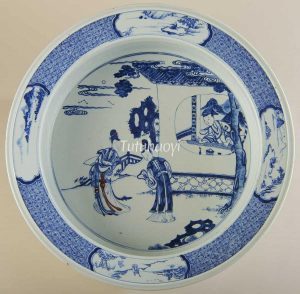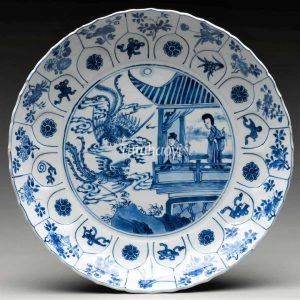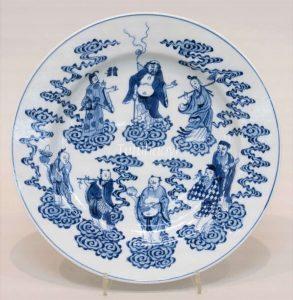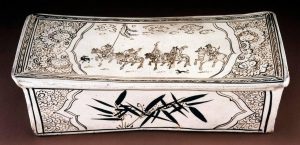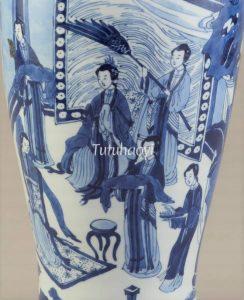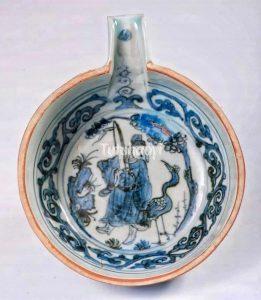Showing Results Containing
Correctly identifying figures is crucial to deciphering an obscure story scene. Looking at this featured image, for example, some may think that the two figures in non-specific attires on a dragon and a phoenix are anonymous Daoist immortals. But ...
Have you ever been puzzled by the description of ‘figural paintings’ for Chinese porcelains listed by various museums and auction catalogues? In fact, many Chinese paintings with figures refer to ancient stories and have meanings behind the scenes...
Mr Henk B. Nieuwenhuys from the Netherlands is the first foreigner who has kindly donated his art collection to China. Here are short video clips from a documentary made for this special event, in which Dr Yibin Ni was invited to introduce Nieuwen...
This is an overview by Dr Yibin Ni on how the topic of ‘The Birthday Party of the Queen Mother of the West’ was depicted on Chinese artworks, from woodblock print during Ming dynasty to scroll painting and porcelains in Qing dynasty.
‘Eighteen Scholars’ was the name bestowed upon the circle of eminent men whom Li Shimin, later Emperor Taizong, drew to his side in the early Tang dynasty.
In the fourth year of Wude (621 CE), Prince Qin Li Shimin 李世民, ennobled as Grand General of Heavenly Strategy and permitted to appoint his own officers, founde...
Legend of the Epiphyllum (Tanhua Ji 昙花记) is a late Ming dynasty drama written by the accomplished scholar Tu Long (屠隆, 1542–1605), composed during the Wanli reign. Renowned for his achievements in literature, art, and Buddhist philosophy, Tu Long described this legendary play as a work intended ‘to expound the l...
This is Scene Five of Act Two of the Chinese classic popular drama Romance of the Western Chamber (西厢记 Xixiang ji).
At a family dinner party, Zhang Junrui...
Duke Mu of the Qin State (秦穆公, died 621 BCE) was one of the so-called Five Hegemons (五霸 wuba) in the Spring and Autumn Period (770 – 476 BCE) (春秋 chunqiu). He had a daughter named ‘Nongyu (弄玉, meaning Playing Jade)’, who was a talented musician excelling at playing the sheng (笙 mouthorgan...
Wang Zhaojun (王昭君, c.52 – c.15 BCE) was one of the court ladies in the harem of Emperor Yuan of the Western Han dynasty (汉元帝, 206 BCE – 8 CE). It was not possible for the emperor to meet every one of the three-thousand concubines, so he had a court painter paint their pictures to facilitate his selection process. Every l...
In Zhuangzi (庄子), an ancient Chinese text from the late Warring States period (476–221 BCE) and one of the two foundational texts of Daoism, the Queen Mother of the West (Xiwangmu 西王母) was mentioned as a deity who ‘obtained the Dao (the Way)’. According to the Scripture of Great Peace (Tai...
Zhao Bian (赵抃, 1008–84) was held in high esteem all his life and posthumously because of his incorruptibility and sound statesmanship during his entire career. His prize possessions were legendarily well-known: a qin zither and two pets, a Continue Reading
A scholar official in Song dynasty Sima You (司马槱) dreamed of a beautiful girl presenting him the first half of a song, which he later developed into a full version called Huangjinlv (黄金缕). The girl was none other than a famous courtesan Su Xiaoxiao (苏小小) who lived by the Qiantang River and was in the local high ...
